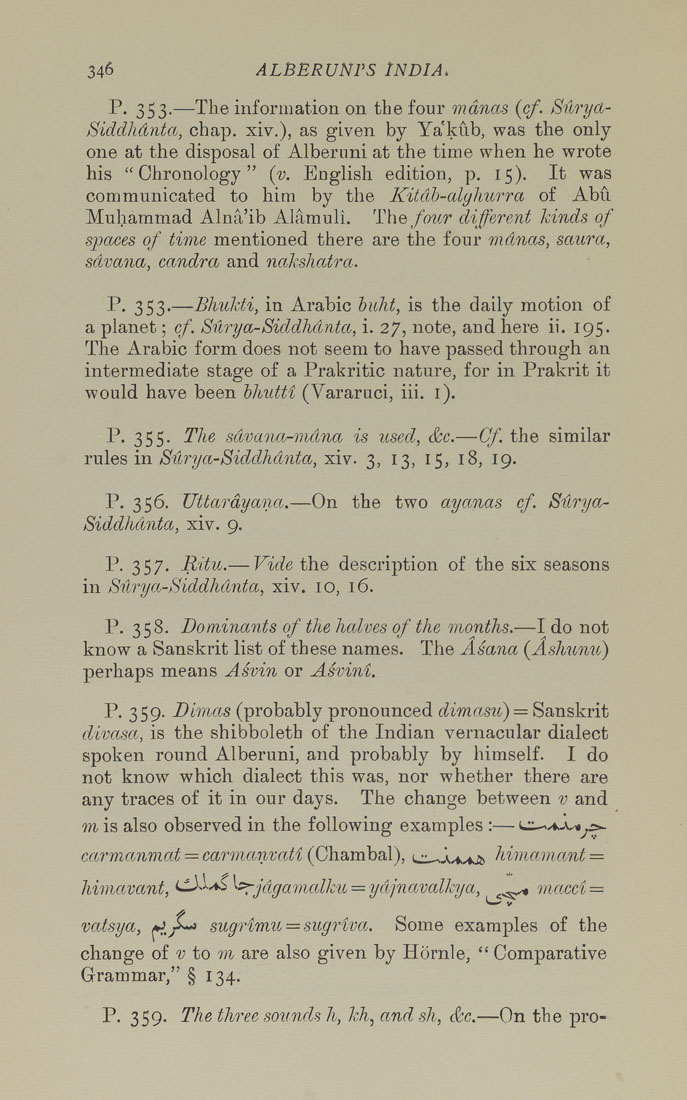346 ALBERUNTS INDIA.
P. 353.^—^The information on the four mdncts (cf Silrya,-
Siddhdnta,, chap, xiv.), as given by Ya'kub, was the only
one at the disposal of Alberuni at the time when he wrote
his "Chronology" (v. English edition, p. 15). It was
communicated to him by the Kitctb-cdghurra of Abii
Muhammad Alna'ib Alamuli. The four different kinds of
spaces of time mentioned there are the four mdncts, sctitra,
sdvana, candra and nctkshatrct.
^^' 353-—Bhukti, in Arabic buht, is the daily motion of
a planet; cf. Silrya-Siddhdnta, i. 27, note, and here ii. 195.
The Arabic form does not seem to have passed through an
intermediate stage of a Prakritic nature, for in Prakrit it
would have been bhidti (Vararuci, iii. i).
P. 355. The sdvanct-metnct is ttsed, &c.—Cf. the similar
rules in Surya-Siddhdnta, xiv. 3, 13, 15, 18, 19.
P, 356. Uttardyanet.—On the two ay anas cf. SHrya-
Siddhdntct, xiv. 9.
P. 357. R'ltu.— Vide the description of the six seasons
in Silrya-Siddhdntct, xiv. 10, 16.
P. 358. Dominants of the halves of the months.—I do not
know a Sanskrit list of these names. The Asana (Ashunu)
perhaps means Asvin or Asvini.
P. 359. Dimcts (probably pronounced dim asu) = Sanskrit
divctsct, is the shibboleth of the Indian vernacular dialect
spoken round Alberuni, and probably by himself. I do
not know which dialect this was, nor whether there are
any traces of it in our days. The change between v and
m is also observed in the following examples :— i-::^,».-c«^.>.
ca,rma,7imett = carmamvctti (Chambal), l::^^^,^ hinictmetnt —
himavctnt, <^'-'*-^^=TJdgama,lkit = yetjna,vctlkya, ^„^^ metcci =
vatsya, ^„/^ sugrimu — sitgriva. Some examples of the
change of v to m are also given by Hornle, " Comparative
Grammar," § 134.
P. 359. The three sounds h, kh, ctnd sh, &c.—On the pro-
|








